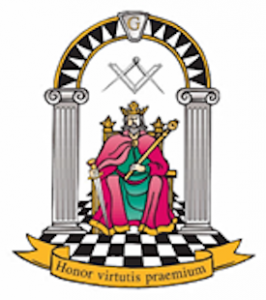Credit: https://issuu.com/apmgraphics/docs/freemason_nsw_act_other_orders
The Masonic Order of Athelstan was formed in 2005, the first Court of the Order was consecrated on 22 October 2005 at Newmarket, East Anglia, and grew out of the shared interests that a number of like-minded individuals had in the origins of Masonry.
Their research culminated in a few members of that group focusing specifically on the Saxon Chronicles. In essence, their informal meetings became more and more regular and the rich and invigorating debates offered each member considerable encouragement and support to continue with their personal endeavors.

As the group progressed, its subsequent interface with other like-minded Masons encouraged them to progress the idea of a new Order, even to the writing of a ritual to support it. This ritual was based on the research of many old historic documents and the discovery of old Craft and other Masonic rituals. Eventually, a draft of the ritual was produced based upon the life and symbolism of King Athelstan, the grandson of King Alfred, the first King of England to be referred to as ‘the King of All the English’.
The first Court of the Order was consecrated on 22 October in Newmarket, East Anglia. The Order is now widespread with 10 provinces within England and Wales and overseas in India, Australia, the United States, and Spain and is one of the fastest growing Orders in Freemasonry with a combined membership reaching close to 3,000 members.
The Masonic Order of Athelstan portrays the story of a Master Mason called to York in 926 to receive the Ancient Charges. It goes through a series of rituals to explain a lot of the Symbolism we still see in some Lodges today and culminates with a historical oration taking us through the development of the various Grand Lodges, the appointment of Sir Thomas Gresham in 1567 as the first Speculative Grand Master and ends at 1813 with the formation of the United Grand Lodge of England.
The main difference is that the Masonic references represent the earlier recorded references to Masonry in Britain. In this Order, we aim to bring to life, the 926 Court that was held in York to educate and raise the quality of Masonry in 10th Century England and in so doing to explore the development of the Craft over the centuries in order to prompt further study and research. As such our meetings are held in a Court and our candidates are ‘instructed into the Order’.
‘The inner Workings of n Eminent Prior’ deals with the earliest passing of the veils ceremony and the Kabbalistic explanation of the four banners of the Royal Arch. ‘The inner Workings of a Worshipful Master or Grand Master of Speculative Masons’ are based on the betrayal of Athelstan by Edwin.
The appendant Order of the Scarlet Mantle is strictly a reward-based degree for those Knights who have given meritorious service to the Order and to their Court. It is a Knighting of Athelstan by Alfred the Great in and around the year 898 (the first recorded making of a Knight in England). Members bear the initials of the Scarlet Mantle (KSM), Knight Commander of the Scarlet Mantle (KCSM) or Grand Cross of the Scarlet Mantle (GCSM).
Structure and Qualification
To be a member of the Order, although invitational, you must be a subscribing Master Mason and Royal Arch Mason and to acquire the Chair as WM of the Court you must be a Past Master of the Craft. You must also continue membership in both Orders
Meetings vary from two to three meetings per year and the cost of the regalia is incorporated into your joining fee of around $150. Annual dues are per calendar year of around $50 depending on the Court.
For more information or if you would like to join, please visit the following URLs:
– https://www.athelstan.org.uk/
– https://athelstanusa.org/
– https://southrhegedmoa.org.uk/the-order/
– http://www.athelstansussex.org.uk/
– https://athelstan-magonsaetan.org/about
Or, go to the MASONIC LODGE LIST and select the appropriate lodge in your jurisdiction.